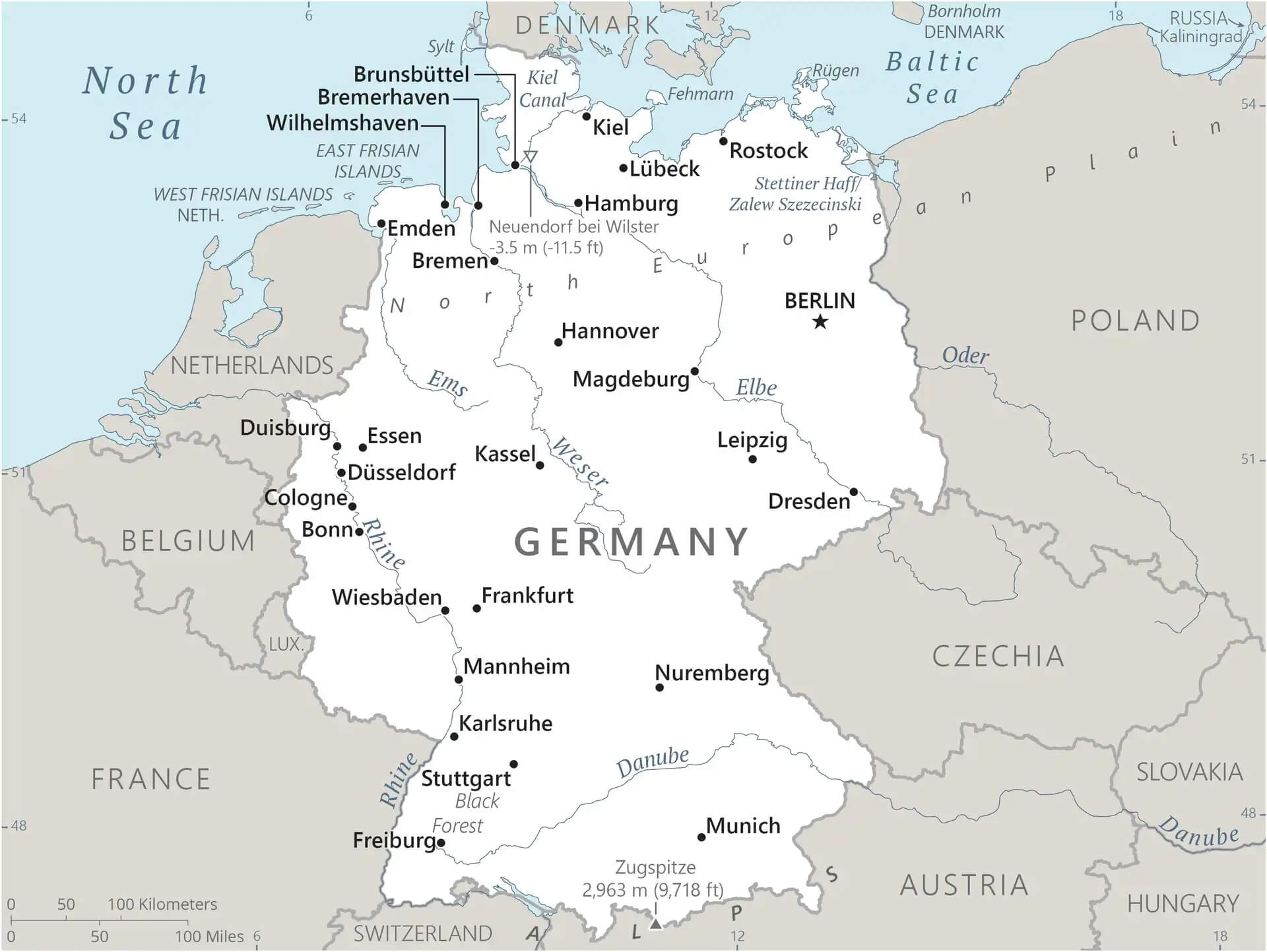World Book
Germany
World Book Index
79


With a score of 79, the country is ranked 22nd out of 158 countries in the World Book ranking. (more information)
Introduction
Background
As Europe's largest economy and second-most populous nation (after Russia), Germany is a key member of the continent's economic, political, and defense organizations. Divided after World War II, Germany reunified in 1990 when the USSR collapsed and the Cold War ended.
Geography
Area
total : 357,022 sq km
land: 348,672 sq km
water: 8,350 sq km
Climate
temperate and marine; cool, cloudy, wet winters and summers; occasional warm mountain (foehn) wind
Natural resources
coal, lignite, natural gas, iron ore, copper, nickel, uranium, potash, salt, construction materials, timber, arable land
People and Society
Population
total: 84,119,100 (2024 est.)
Ethnic groups
German 85.4%, Turkish 1.8%, Ukrainian 1.4%, Syrian 1.1%, Romanian 1%, Poland 1%, other/stateless/unspecified 8.3% (2022 est.)
Languages
German (official); note - Danish, Frisian, Sorbian, and Romani are official minority languages; Low German, Danish, North Frisian, Sater Frisian, Lower Sorbian, Upper Sorbian, and Romani are recognized as regional languages
Religions
Roman Catholic 24.8%, Protestant 22.6%, Muslim 3.7%, other 5.1%, none 43.8% (2022 est.)
Population growth rate
-0.12% (2024 est.)
Government
Government type
federal parliamentary republic
Capital
name: Berlin
Executive branch
chief of state: President Frank-Walter STEINMEIER (since 19 March 2017)
head of government: Chancellor Friedrich MERZ (since 6 May 2025)
Diplomatic representation in the US
chief of mission: Ambassador Jens HANEFELD (since 5 September 2025)
Diplomatic representation from the US
chief of mission: Ambassador (vacant); Chargé d’Affaires Alan MELTZER (since July 2024)
Economy
Economic overview
leading export-driven, core EU and eurozone economy; key automotive, chemical, engineering, finance, and green energy industries; growth stalled by energy crisis and declining exports; tight labor market with falling working-age population; fiscal rebalancing with phaseout of energy price supports
Real GDP (purchasing power parity)
$5.247 trillion (2024 est.)
$5.26 trillion (2023 est.)
$5.274 trillion (2022 est.)
Real GDP per capita
$62,800 (2024 est.)
$62,700 (2023 est.)
$62,900 (2022 est.)
Exports
$1.949 trillion (2024 est.)
$1.958 trillion (2023 est.)
$1.917 trillion (2022 est.)
Exports - partners
USA 10%, France 8%, Netherlands 7%, China 7%, Italy 6% (2023)
Exports - commodities
cars, vehicle parts/accessories, packaged medicine, plastic products, vaccines (2023)
Imports
$1.774 trillion (2024 est.)
$1.781 trillion (2023 est.)
$1.808 trillion (2022 est.)
Imports - partners
China 12%, Netherlands 7%, USA 7%, Poland 6%, France 5% (2023)
Imports - commodities
cars, vehicle parts/accessories, garments, natural gas, vaccines (2023)
Human Development Index
The country's Human Development Index (HDI) is 0.959, ranking it 5th out of 193 countries tested. (more information)
World Happiness Report
The World Happiness Report ranked the country 48th out of 158 countries tested with a score of 6.234. (more information)



